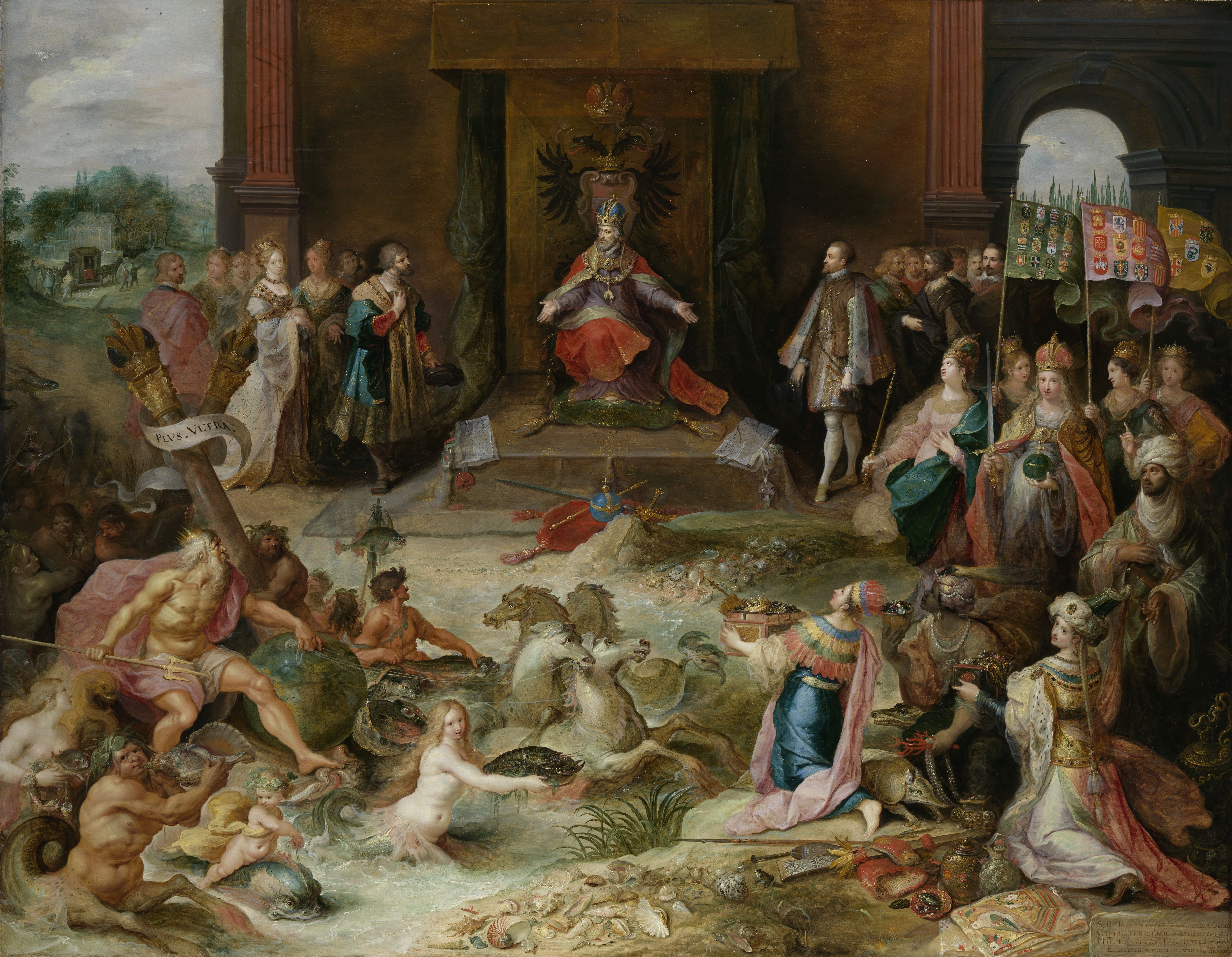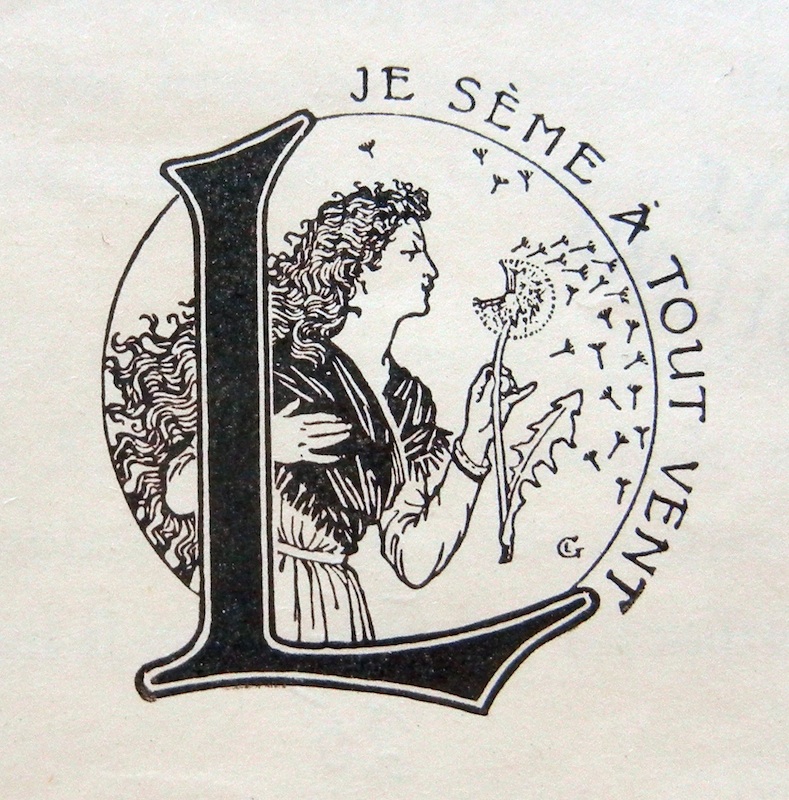|
Francken Family
The Francken family was a family of artists the members of which were mainly active in Antwerp in the 16th and 17th centuries. Many of the members over three generations had the same first names Frans, Hieronymus and Ambrosius. While this may at the time have been effective as a marketing method by ensuring continuity of the family business, today's legacy is some confusion in the attribution of paintings, which often do not differ widely in style or execution between the various family members. The confusion is exacerbated by the signing practices of some family members: when Frans I's son Frans II reached his majority and began to sign paintings, Frans I started to add "the elder" to his signature to distinguish himself from his son, who then signed his works as "the younger". This happened again in the next generation when Frans II's son Frans III reached his majority. Frans II then started to sign his works with ''the elder'', while Frans III used ''Frans the younger''. Famil ... [...More Info...] [...Related Items...] OR: [Wikipedia] [Google] [Baidu] |
Frans Francken The Younger
Frans Francken the Younger (1581, Antwerp – 6 May 1642, Antwerp) was a Southern Netherlands, Flemish painter and the best-known and most prolific member of the large Francken family of artists.Frans Francken the Younger at the J. Paul Getty Museum He painted large altarpieces for churches as well as smaller historical, mythological and allegorical scenes. His depictions of Cabinet of curiosities, collectors' cabinets established a popular new genre of art in the era. Francken often collaborated with other artists, adding figures and narrative elements to scenes created by specialists in landscape, architectural and floral still life paintings. [...More Info...] [...Related Items...] OR: [Wikipedia] [Google] [Baidu] |
16th-century Flemish Painters
The 16th century began with the Julian year 1501 (represented by the Roman numerals MDI) and ended with either the Julian or the Gregorian year 1600 (MDC), depending on the reckoning used (the Gregorian calendar introduced a lapse of 10 days in October 1582). The Renaissance in Italy and Europe saw the emergence of important artists, authors and scientists, and led to the foundation of important subjects which include accounting and political science. Copernicus proposed the heliocentric universe, which was met with strong resistance, and Tycho Brahe refuted the theory of celestial spheres through observational measurement of the 1572 appearance of a Milky Way supernova. These events directly challenged the long-held notion of an immutable universe supported by Ptolemy and Aristotle, and led to major revolutions in astronomy and science. Galileo Galilei became a champion of the new sciences, invented the first thermometer and made substantial contributions in the fields of ph ... [...More Info...] [...Related Items...] OR: [Wikipedia] [Google] [Baidu] |
Francken Family
The Francken family was a family of artists the members of which were mainly active in Antwerp in the 16th and 17th centuries. Many of the members over three generations had the same first names Frans, Hieronymus and Ambrosius. While this may at the time have been effective as a marketing method by ensuring continuity of the family business, today's legacy is some confusion in the attribution of paintings, which often do not differ widely in style or execution between the various family members. The confusion is exacerbated by the signing practices of some family members: when Frans I's son Frans II reached his majority and began to sign paintings, Frans I started to add "the elder" to his signature to distinguish himself from his son, who then signed his works as "the younger". This happened again in the next generation when Frans II's son Frans III reached his majority. Frans II then started to sign his works with ''the elder'', while Frans III used ''Frans the younger''. Famil ... [...More Info...] [...Related Items...] OR: [Wikipedia] [Google] [Baidu] |
Éditions Larousse
Éditions Larousse () is a French publishing house specialising in reference works such as dictionaries. It was founded by Pierre Larousse, and for some time was known also as Librarie Larousse; its best-known work is the '' Petit Larousse'' single-volume quarto dictionary. It was acquired from private owners by Compagnie Européenne de Publication in 1984, then Havas in 1997. It was acquired by Vivendi Universal in 1998. Vivendi made losses in 2002 and sold Larousse to the Lagardère Group, thus satisfying public opinion by keeping Larousse in French hands, despite objections by smaller publishers about Lagardère's virtual monopoly on French publishing. It has been a subsidiary of Hachette Livre since 2004. It also offers the '' Larousse Gastronomique'' and a free, open-content encyclopedia. The logo was designed by, among others, Jean Picart Le Doux (1955–1970), Jean-Michel Folon (1972), Philippe Starck (2006), Christian Lacroix Christian Marie Marc Lacroix (; born ... [...More Info...] [...Related Items...] OR: [Wikipedia] [Google] [Baidu] |
Jan Baptist Francken
Jan Baptist Francken was supposed to be a painter from the Francken family and/or the son of Sebastian Vrancx, but is now considered to have been an error and to have never existed. The confusion was created by the many painters named Francken, some poor attributions, and a portrait by Anthony van Dyck Sir Anthony van Dyck (; ; 22 March 1599 – 9 December 1641) was a Flemish Baroque painting, Flemish Baroque artist who became the leading court painter in England after success in the Spanish Netherlands and Italy. The seventh child of ... of a certain Johannes Baptist Franck, aged 32, of whom nothing more is known. He is sometimes said to be the same as Hans Francken (born in 1581), another obscure member of the same family. In art histories from the 18th and 19th century like Michael Bryan's ''Bryan's dictionary of painters and engravers'' (1886) he received a lengthy lemma: :FRANCKEN, Jan Baptist, the son of Sebastiaen Francken, was born at Antwerp in 1599. He rec ... [...More Info...] [...Related Items...] OR: [Wikipedia] [Google] [Baidu] |
Constantijn Francken
Constantijn Francken or Konstantijn FranckenFrans Jozef Peter Van den Branden, ''Geschiedenis der Antwerpsche schilderschool'', Antwerpen, 1883, p. 978-980 Name variations: Constantinus Francken, Constantyn Francken, Constantin Francken, Constantyn Franc (Baptised on 5 April 1661, Antwerp – 1717, Antwerp), was a Flemish Baroque painter and the final painter in the long line of the Francken family of artists. He is mainly known for his battle scenes. He worked for a long time in Paris where he was a court painter to the King and mainly painted portraits.Natasja Peeters, ''From Nicolaas to Constantijn: the Francken family and their rich artistic heritage'', in" K. Brosens, L. Kelchtermans, K. Van der Stighelen (eds.), 'Family Ties Art Production and Kinship Patterns in the Early Modern Low Countries', Brepols, 2012, pp. 112-113 Life Francken was born in Antwerp as the son of Hieronymous Francken III and Cornelia Daep. He was baptised on 5 April 1661. He was the final artist ... [...More Info...] [...Related Items...] OR: [Wikipedia] [Google] [Baidu] |
Hieronymus Francken III
Hieronymus Francken III (1611 in Antwerp – 1671 in Antwerp), was a Flemish Baroque painter and a well known member of the Francken family of artists. Life He was the son of Frans Francken II and Elisabeth Placquet and painted in the family tradition of religious works and historical allegories.Hieronymus Francken in the He was the father of Constantijn Francken
Constantijn Francken or Konstantijn FranckenFrans Jozef Peter Van den Branden, ''Geschiedenis der Antwerpsche schilderschool'', Antwerpen, 1883, p. 978-980 Name variations: Constantinus Francken, Constantyn Francke ...
[...More Info...] [...Related Items...] OR: [Wikipedia] [Google] [Baidu] |
Pieter Neefs The Younger
Pieter Neefs the Younger or Pieter Neeffs the Younger (bapt. 23 May 1620 – after 1675) was a Flemish people, Flemish painter who mainly specialized in architectural interiors of churches.Frans Baudouin, "Neeffs," ''Grove Art Online'', Oxford University Press, accessed 1 October 2016 Son of the prominent architectural painter Pieter Neefs the Elder he started out working in his father's workshop in Antwerp. He collaborated with various leading staffage painters to create lively church interiors. Life Pieter Neefs the Younger was baptized in Antwerp on 23 May 1620. (see index, v.1; plate 57, v.2) His father was the painter Pieter Neefs the Elder and his mother Maria Louterbeens. Pieter had four siblings of whom his older brother Lodewijck Neefs, Lodewijk also became a painter. The two brothers both trained with their father and as a result, their works were very close to their father's, and attributions of their individual hands can be difficult. After the death of their f ... [...More Info...] [...Related Items...] OR: [Wikipedia] [Google] [Baidu] |
Staffage
In painting, staffage () are the human and animal figures depicted in a scene, especially a landscape A landscape is the visible features of an area of land, its landforms, and how they integrate with natural or human-made features, often considered in terms of their aesthetic appeal.''New Oxford American Dictionary''. A landscape includes th ..., that are not the primary subject matter of the work. Typically they are small, and there to add an indication of scale and add interest. Before the adoption of the word into the visual arts in the late eighteenth and early nineteenth centuries, ''Staffage'' in German language, German could mean "accessories" or "decoration". The word can be used in two senses: as a general term for any figures in a work, even when they are, at least ostensibly, the main subject, and as a descriptive term for figures to whom no specific identity or story is attached, included merely for compositional or decorative reasons. In the latter sense, st ... [...More Info...] [...Related Items...] OR: [Wikipedia] [Google] [Baidu] |
Frans Francken III
Frans Francken III (1607–1667) was a Flemish Baroque painter and the best known member of the fourth generation of the Francken family of artists., p. 98 Life Francken was born and died in Antwerp. He was the son of Frans Francken II and Elisabeth Placquet and became a master in the Antwerp Guild of St. Luke in 1639.Frans Francken (III) at the He was dean of the Guild of St. Luke in 1656–66. He was the teacher of Carstia ... [...More Info...] [...Related Items...] OR: [Wikipedia] [Google] [Baidu] |
Ambrosius Francken II
Ambrosius Francken II, also called Ambrosius Francken the Younger to distinguish him from his uncle of the same name, was born at Antwerp in the latter part of the 16th century. He studied under his father, Frans Francken the elder, whose style he imitated. In 1624 he was registered as a master in the Guild of St. Luke at Antwerp, and he is said to have painted some time in Leuven Leuven (, , ), also called Louvain (, , ), is the capital and largest City status in Belgium, city of the Provinces of Belgium, province of Flemish Brabant in the Flemish Region of Belgium. It is located about east of Brussels. The municipalit .... He died in 1632. Little else is known of him. Family tree References * Year of birth unknown 1632 deaths 17th-century Flemish painters Painters from Antwerp Ambrosius II {{Flemish-painter-stub ... [...More Info...] [...Related Items...] OR: [Wikipedia] [Google] [Baidu] |






